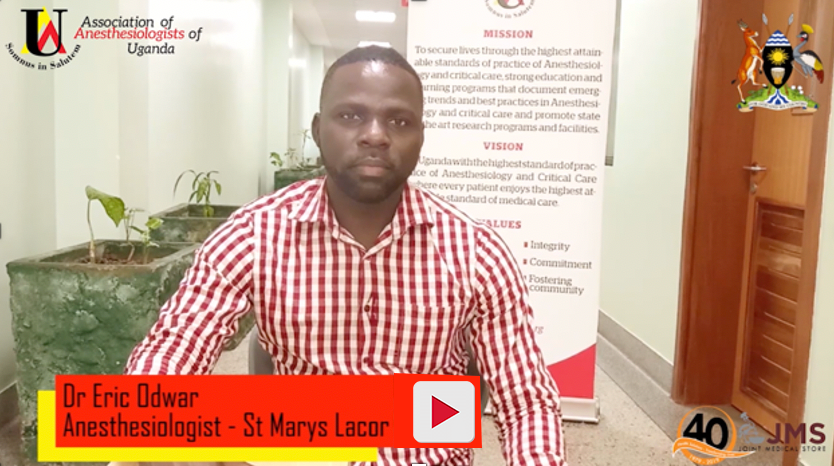
The Hospital Point of View: An Interview with Dr. Eric Odwar



The Government of Uganda is undertaking an ambitious effort to increase critical care capacity by fully equipping ICUs at all regional referral hospitals across the nation. We’re proud the Gradian Comprehensive Care Ventilator (Gradian CCV) and our robust training and service can support this critical moment and the partners on the frontlines, such as the Association of Anesthesiologists of Uganda (AAU) and Joint Medical Store (JMS)—a leading medical device and pharmaceutical distributor—making this change a reality for the nation’s COVID-19 response and future health system strength.
The AAU and JMS recently produced a series of short video interviews with anesthesiologists and intensive care specialists about the current state and future vision of critical care in Uganda and what it’ll take to get there, from policy to equipment to education and tackling the biggest challenges to progress.
Dr. Eric Odwar is an anesthesiologist at St. Mary’s Hospital Lacor in Gulu, Uganda. Lacor’s ICU sees an average of five to seven patients every week and has had CCV’s since 2019. Lacor will be one of the hospitals who is having their ICU bed and ventilator capacity increase under the national critical care expansion. In this video, he discusses current operations, the role of the Gradian CCV, and the need to support training for healthcare providers.
“I’m Dr. Eric, an anesthesiologist working at Lacor Hospital. At Lacor Hospital, we have four [Gradian] Comprehensive Care Ventilators, and they are all working.”
“Averagely, we have about five to seven patients in a week, so that amounts to about 20 to 25 patients a month.”
“[The Gradian CCV] has got a long battery life, which can help you ventilate the patients for quite some time; about 21 hours if all the batteries are fully charged, both internal and external batteries. So that’s one good thing that I like about the ventilators. And you can activate a quick start more, that can allow you not to bide much time in terms of setting the ventilator, because the quick start helps you to immediately ventilate the patient and then adjust the settings later on.”
“Some of the things that have to be improved is having a standard mode installing these ventilators. And also organizing CMEs (continuing medical education credits) or clinical refresher trainings for the lower cadres [of healthcare workers] so that they constantly get to have the concepts of how to operate these ventilators.” [Learn more about Gradian’s trainings here.]
“The essential things that we really need on the ground to effectively utilize these ventilators are the human resources. Human resources in terms of the intensivists, the anesthesiologists, the biomedical engineers and also having to train the anesthetists on how to operate these machines.”
“It’s a good thing. And we need to relate that the government of Uganda and the Ministry of Health for the initiative and the good work to have these ventilators in these hospitals. The biggest risk right now is how are these machines going to be operated and maintained to constantly keep them functioning. So this hands down back to us, the anesthesiologists [and the Association of Anesthesiologists of Uganda], together with the Ministry of Health, to make sure that the human resources on the ground so that these machines are effectively utilized.”